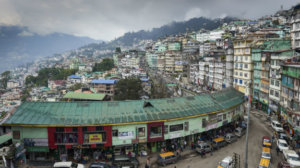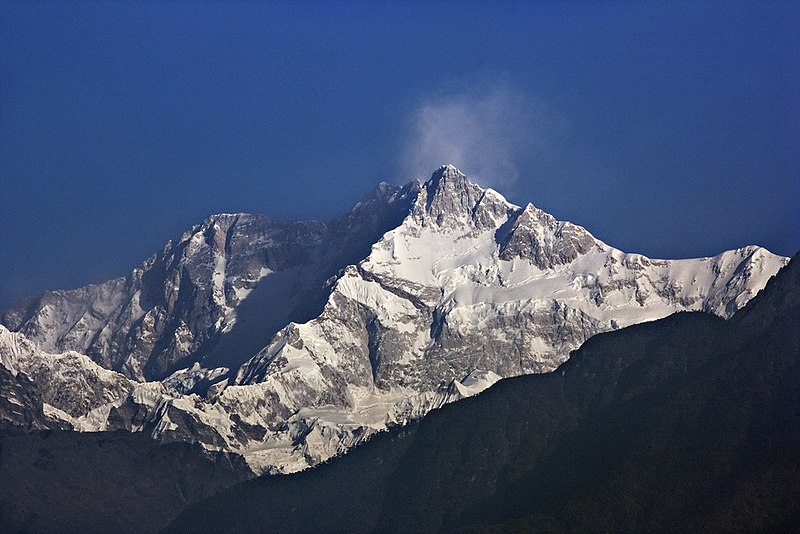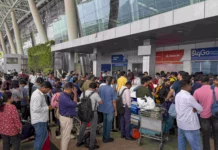Sikkim, located in the northeastern region is the smallest state in India. Travelling across this Himalayan state is particularly highlighted by the dramatic contouring of the scenery from thick woodlands to colorful meadows to few barren patches to the panoramic views of the snowcapped mountains. Occupied by warm-hearted people offering some of the best hospitality and boasting of magnificent treks, snow activities and scenic views, Sikkim is truly a destination people fall in love with!
The third highest peak in the world and jewel of the state, Kanchenjunga is visible from almost anywhere you stand. Characterized by freezing winters and cool summers, the state plays host to a large number of tourists all year round.
Accessible mainly via road from the neighboring states, the newly inaugurated Pakyong airport near the capital city of Gangtok highlights government efforts towards better connectivity.
Until 1975, when it was merged with India, Sikkim functioned as an autonomous kingdom with its own monarchy. Since then, it has become an integral part of India with a distinctive culture, which has evolved into a multifaceted one. Influenced by the peaceful coexistence of the dominant Nepalese community with the native Bhutias and the immigrant Lepchas, one will find many monasteries and Hindu shrines close to each other.
Tourist places in Sikkim

Gangtok: Incredibly alluring, pleasantly boisterous and wreathed in clouds – Gangtok, the capital of Sikkim, is one of the most popular hill stations in India. Lying at the height of 1650 m above sea level, the town during its bright sunny days offers spectacular views of Mt. Kanchenjunga. Gangtok is a base for adventure enthusiasts comprising of trekkers and campers to the Himalayan mountain ranges. During the months of March to Mid-May, blooming of wild Rhododendrons transform the surrounding regions in vast fields of colorful carpets.
Tsomgo Lake: Perched between the mountains at a dizzying height of 12400 ft above sea level, the Tsomgo Lake is one of the few high-altitude lakes in India situated on the Gangtok – Nathu La highway. Also popularly known as Changu Lake, it is a part of every tourist’s itinerary and for a good reason – the overwhelming scenic beauty. Enveloped by steep snow-capped mountains and resting between a bright green carpet of alpine forests, the charming beauty of Tsogmo Lake is bound to leave you in awe. The lake’s mesmerizing scenic allure combined with its legendary significance to the locals definitely makes it a must visit attraction of Sikkim.
Nathu La Pass: Nathula, one of the highest motorable roads in the world, is a mountain pass in the Himalayan peaks that co-joins Sikkim and China. Situated on the Indo-Tibetan border 14450 ft. above sea level, Nathu La is one of the most important Himalayan passes in the country. Nathu means ‘listening ears’, and La means ‘pass’. Nathula is one of the three open trading border posts between India and China and is famous for its picturesque beauty and beautiful environment. The temperature here remains low for most parts of the year, and it becomes a hotspot for tourists during summer.
Lachen: Situated in the northern district of Sikkim, Lachen is one of the most beautiful towns an attractive tourist spot, which is well known for its Lachung monastery. Its natural beauty and serene vegetation are worth commending and it is believed to be one of the most noteworthy and popular places for Buddhist pilgrims and tourists. Lachen is a less-populated beautiful holiday destination, also famous as the gateway to the sacred Gurudongmar and Tso Lhamu lakes.
Yumthang Valley: The popular Yumthang Valley in North Sikkim is located 140 km north of Gangtok. Famous as the “Valley of flowers”, this is a rare and exotic location with hot springs, rivers, yaks and lush green meadows. Situated at an elevation on 3564 meters, this stunning valley is a paradise for nature lovers as it houses the Shingba Rhododendron Sanctuary that has over 24 species of Rhododendron flowers (the state flower) blooming from late February to mid-June.
Gurudongmar Lake: Located at the height of 17,100 feet above the sea level, Gurudongmar Lake, located in Sikkim, is one of the fifteen highest lakes in the world. It is also the second highest lake in Sikkim, after the Cholamu Lake located at the height of 18,000 feet. The splendid and scenic beauty of the place is breathtaking and attracts tourists from all across the world. Gurudongmar Lake also has great religious significance attached to it, and the beautiful view of Mount Siniolchu and Kanchenjunga from the lake is a sight to behold and cherish. The water of Gurudongmar Lake is believed to have healing powers, and many tourists carry the water with them on their way back.

Pelling: Is a beautiful town in the West district of Sikkim, has become the second biggest tourist destination in Sikkim after Gangtok. Located 10 km from Geyzing and 130 km from Gangtok, the main attraction of the place is the breathtaking sight of the Khangchendzonga and the neighboring peaks. The famous Pemayangste monastery is less than a kilometer from here and is a major tourist hotspot. Pelling also has sites for mountain biking, rock climbing, village tours, meditation, apart from serving as a base for a number of treks in the region. The scenic town of Pelling is a perfect holiday destination for all nature lovers and adventure enthusiasts.
How to reach Sikkim
The nearest airport in Bagdogra in West Bengal. This airport is about 124 kilometers from Gangtok and it takes about 5 hours from Bagdogra by buses or cabs. If you want to travel in luxury, you can travel by helicopter service from Bagdogra to Gangtok that takes about 30 minutes. This helicopter service is run by the Sikkim tourism Development Corporation
What is the best time to visit Sikkim?
The best time to visit Sikkim is from March to June and from September to December when the weather is favorable. In the months of January and February, Sikkim receives snowfall and in the monsoon months (July to August) it is better to avoid visiting since there is a risk of landslides. The weather remains balmy in summers. Snowfall is observed in the winter month (Late December to February).
Also Read: Gangtok, Sikkim: Scenic beauty & striking views of Kanchenjunga







